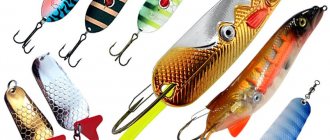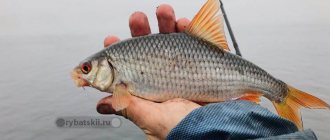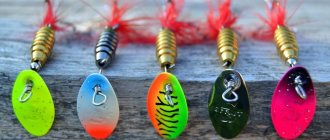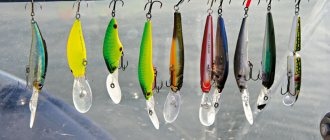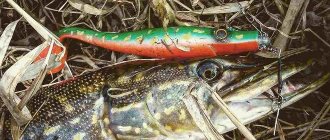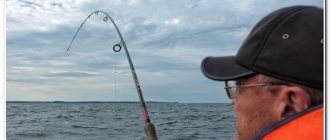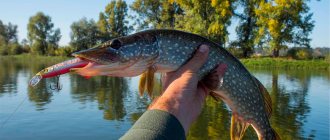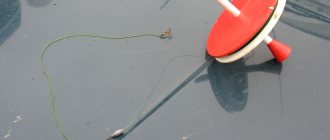Peculiarities of biting in the autumn months (September, October and November)
Warm, cloudy days are the ideal time to catch spotted predators. But a light drizzling rain will not affect the biting activity at all. At the end of September - beginning of October, the most intense bite is observed in the mouth areas of small rivers (approximately the last 10-15 km). Autumn pike bite all day, you need to look for it throughout the entire reservoir. It can be both on the surface and at depth. The colder the water, the larger the bait should be.
Let's equip a spinning rod for pike.
Rod
- for small rivers - light, length 2.1-2.4 m, test load - up to 10 g.
- for medium rivers - length 2.4-2.7 m, test load - up to 20 g.
Coil
We take a spinning reel, as it is very convenient to use, and it is also a reliable and flexible tool. Inertia-free is the best option for spinning at the moment. When choosing, pay attention to the fact that the reel has a smooth ride and ease of rotation.
- for light spinning rods – size 500-1500;
- for medium spinning rods – 1500-2500;
- for powerful spinning rods – 2500-3500.
fishing line
When fishing with a spinning rod, two types of fishing line are used.
- – monofilament, 0.18-0.2 mm – for catching small pike;
- – braided, 0.10 – 0.16 mm – for catching large pike.
Braided fishing line is stronger and not subject to stretching, so it is better to opt for it. We choose a braid with a larger cross-section. One fishing line may have stronger impregnation, while another may have weaker impregnation. Weaker line may hold knots better, so choose according to your preference. The color of the fishing line does not play a special role, but more often they give preference to a colorless fishing line or choose it to match the color of the water.
More and more often, anglers are choosing a dark green color option.
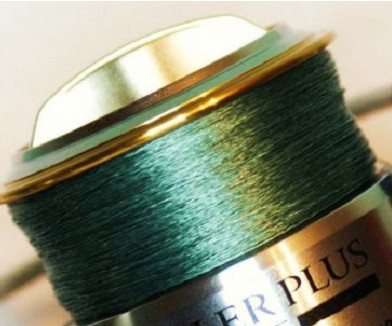
Leash
- tungsten;
- fluorocarbon;
- metal (guitar string).
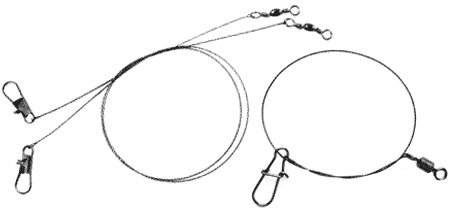
When fishing for pike, you should always use a leash because its teeth can cut any braided line. Types of leashes do not affect the game of bait. But the metal one can bend, and you have to straighten it by hand. Practice shows that metal leashes are more reliable. You can even make them yourself from guitar strings.
A number one string with a diameter of 0.08 mm is quite suitable.
Pike perch in autumn
A striking feature of the behavior of pike perch in the summer-autumn period is their clear division between day and night hunting: during the day in the depths, at night in the shallows. Despite the fact that in autumn pike perch can be caught on edges and dumps during the day, it is still a more nocturnal predator, and it is much easier to catch it at night, and the prospects for a large catch are higher.
It is advised to catch pike perch on clear, warm nights, and, interestingly, at high pressure. Riffles, snags, and stone deposits at shallow depths near the shore - these are the favorite places for pike perch to go hunting at night. Usually, this is where fishermen, armed with various minnow-class wobblers, are waiting for him. It is this type of bait that is most effective when catching “fanged” at night. Not sharp, monotonous and uniform movements, sometimes with stops in place, movements or “soft” explosions - these are the main movements of the wobbler when catching night pike perch in the shallows. Of the most popular and “popular” wobblers for pike perch in our region, we can name two:
1. Strike Pro Darter R-King, aka “Elephant”
2. Strike Pro Darter R-Queen, aka “Iron”
But the closer the freeze-up time, the more the pike perch moves to depth and less often goes to the shallows. Approximately, from mid-October, pike perch begins to stick to winter schools of peaceful fish, next to which they spend most of their time.
Catching pike with spoons
Oscillating spinners
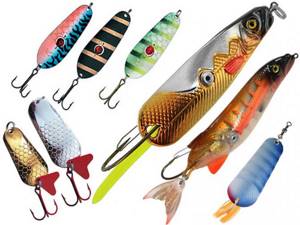
Since high requirements for playing an oscillating spinner are not required, the spinning rod can be of either fast or medium action. The test is approximately selected according to the weight of the bait being thrown. If the spinner weighs 10 grams, then the rod test should fluctuate 5-20 grams. If you fish from the shore, the length of the rod should be 3 meters. This rod will help you make a long cast and control the pike when fishing, preventing it from getting caught in a snag or around any obstacle. When fishing from a boat, we do not need a long rod, and in some cases it can be a hindrance. The length should be 2-2.10.
The reel can be either spinning or multiplying. Since it is easier to work with inertia-free (it is cheaper and less demanding to maintain), this option will be preferable. With a pulling force of at least 2500. The shape of the spoon should resemble the body shape of the fish living there. The color of the spinner doesn't really matter. But it should be taken into account that in sunny weather, light-colored spinners give off large glare, which scares away the pike. Therefore, you need to take a dark spinner.
Fishing technique with an oscillating spoon. Fishing with a spoon is quite simple: throw it out and pull it evenly towards you. If during retrieving we see that a predator follows the lure but does not attack it, then it makes sense to make short jerks with the rod so that the lure makes jerking movements from side to side. This often provokes the predator to attack.
Also, if there is depth in the fishing area and it is possible to let the spinner fall into free fall for 2-3 seconds, then during retrieving you can make short pauses, pausing the reeling of the reel (the spinner falls freely at this time). This will imitate a wounded fish and provoke the pike to bite.
Spinners
We choose the same spinning rod for fishing with rotating spoons as for fishing with spoons.
Mepps #3
Many anglers praise Mepps spinners. Indeed, these lures often produce results. Pike loves red, we know that.
Fishing with a rotating spoon is practically no different from the technique of fishing with a spoon: we throw it and evenly pull it towards us. There are two types of spinners: with a wide blade and a narrow one. The wide blade has a more sweeping play, but a low rotation speed. With a narrow petal the opposite is true. In practice, it has been observed that pike prefer a wide blade with a lower rotation speed. When fishing in shallow water, when we visually observe a predator, but he ignores the spoon and does not want to grab it, we need to slow down the retrieve and let the spoon lightly stroke the bottom with its petal. This affects the pike like a red rag on a bull.
Search for a predator in autumn
Since early autumn has already passed, let's talk about searching for a predator in the period late October - November. As mentioned above, both pike and pike perch, closer to the freeze-up, descend into the pits, changing their usual way of life. They come to the surface or shallows less and less, becoming full-fledged deep predators.
If during the entire open water season we look for a predator along the bottom topography, then in the fall the search for promising points is not tied to dumps and ditches. Predators choose deeper riverbed areas for themselves. White fish gather in schools in the fall and also move in schools, and as you know, the main part of the predator feels great in the role of “shepherds”. By following the flock and keeping it under control, the predator thereby provides itself with the opportunity to feed itself for the entire winter period.
The number of predators living with a school of whitefish can be very large. Therefore, one of the main landmarks for searching for it in late autumn is schools and schools of white fish.
If you find a large accumulation of leucorrhoea on your echo sounder, this place definitely needs to be checked. With a high degree of probability, we can say that in October-November, any significant accumulations of fish are generated by a certain amount of predator. You may have seen videos of some under-ice filming that show schools of fish, consisting of both peaceful and predatory fish. Perhaps you have more than once had to fish “over the heads” when a jig bait, passing through a school of bream, touches it on every fall, and suddenly, right in the middle of the school, a bite from a predator follows. Often, this is what late autumn schools of fish look like - all in one pile. Therefore, in late autumn it makes sense to navigate by a school of whitefish on the echo sounder screen.
Silicone lures for pike

Silicone baits can be varied:
- worms
- vibrotails
- twisters
- crustaceans
- frogs, etc.
The spinning rod required for fishing with silicone baits is different than for fishing with spinners. A spinning rod for jigging needs a fast action.
The test is selected based on the weight of the bait being thrown.
About installation technique. Take a jig head (it can be a jig of any shape or a ball with two ears, which is popularly called a Cheburashka), and the ball is mounted with a hook on the winding rings. We put silicone on the hook. Silicone lures come in different colors, but we recommend using either white or red and white for pike.
The technique of fishing with silicone baits involves jigging (twitching). You need to find an edge on the pond. We throw it onto this edge and take a step down from it. We can see from the rod when the bait is in a free fall, when the bait touches the bottom, we again make two or three turns of the reel. Wiring: 2-3 turns – pause, etc.
Fishing with foam fish
We catch fish with foam rubber in the same way as with silicone.
It has been noticed that when the predator is less active , the step should be short , and when fishing with a foam fish, it makes sense not to throw it immediately from the bottom, but to leave it motionless on the bottom for 3-4 seconds. The pike reacts to this with an immediate attack.
When fishing in snags, in order to avoid frequent snags, it is better to choose a bullet-shaped weight head, as it passes better through obstacles and is less susceptible to snags. You can also use a Tyrolean stick to avoid snags. The hook tip is embedded in silicone. We catch with frequent short light twitches.
It is preferable to choose foam rubber baits in yellow and mouse colors. It has been noticed that they work better.
Fishing with poppers and wobblers
Among the variety of wobblers, the most catchy in the autumn are the following:
- crank
- minnow
- jer-bait

YO-ZURI 3D Flat Crank | Jaxon KarasYO-ZURI | Dino Crank
Three successful Crank wobblers for pike, which have successfully proven themselves among spinning anglers.
A spinning rod for fishing with a wobbler should be taken with a fast action. A spinning reel is suitable for minnows and cranks; for fishing with jer baits, due to its weight, the reel should be a multiplier, since a spinning reel will quickly fail. When the pike is active, it bites better on the crank. During periods of less activity, minnows are preferable.
Wobbler fishing technique:
- Crank : throw and pull slowly (uniform wiring). It makes sense to pause a crank with neutral buoyancy for 2-3 seconds.
- Minnow : Even wiring can be used. During wiring, you can make short jerks so that our wobbler changes direction. Or you can do torn wiring from the very beginning. It has been noticed that shallow-depth wobblers of natural colors attract predators more, and bright acid-lemon color is more suitable for wobblers with deep depth.
- Jer-bait is a surface bait and very heavy. Works best in early autumn at a depth of up to 2 meters. The spinning test is again selected according to the weight of the bait. The depth is small, about half a meter. But if you try, you can drive it deeper. Wiring: you need to make the jerk bait move from side to side with a large deviation; to do this, we make sharp twitches while simultaneously reeling in the fishing line.
- Popper is a surface bait. It has proven itself excellent in early autumn at depths of half a meter to two meters above aquatic vegetation. The rod's action is fast. The reel and line are the same as for the baits described above. Wiring: winding the line with short sharp jerks. No difference was noticed in color.
Content
- Pike perch in autumn
- Pike in autumn
- Perch in autumn
- Search for a predator in autumn
- Technique for catching a predator
- Video: catching a predator in the fall
Most of us associate autumn fishing on the river with the “zhor” of a predator. The air is getting colder, the water too, white fish gather in winter schools and the predator begins to actively manifest itself. But if at the end of September you can catch this same “zhor” from fishing to fishing, then at the end of October-beginning of November, the predator already weakly reacts to bait, since it has already managed to prepare for winter - “fill its belly” and take positions. Let's talk about autumn predator fishing.

